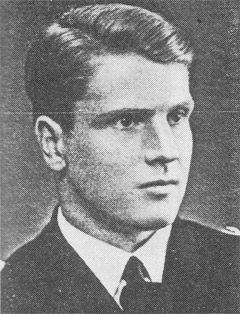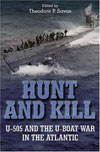
Kit no.9: Type IXB (U-107)
Kit no.10: Type IXC/40 (U-511)
These kits are quite the same, only the towers, and a part of the deck under the tower are different. Both kit can be motorised, but from the ones that I bought last year here in Budapest in two separate shops the motors were missing.
One of my first model-kits was the U-107 that I bought in Austria ten years ago, and that box contained the motor and a rubber filler too. I dare say that the kits are too correct to use them as toys, so the missing motor doesn't really matter in my opinion.
The kits seem to me correct based on my researches, that were some photos from the Internet (uboat.net and the homepage of U-505), some scanned pictures of U-505 from a book and the "U-boats in Action" published by Squadron Signal. I've got a very good description -many thanks to Mr. Roger B. Besaw for it- of the drainage-slot configurations for these ships. This shows that the IXC kit is correct, but the IXB has to be changed by cutting a part of the hull and glue it back in an other way.
Actually I built the Type IXC/40, so this article will be about the building of this kit, but the other box -as I mentioned above- is almost the same.
In the box we will find the building instructions in Japanese, but the part numbering on the drawings are in English, for example B14, the UZO. There aren't many parts, so I don't think that the building without English text can cause problems. The painting is an other question...
There are four molds, a plastic bag, and a decal sheet. The molds are the lower- and upper half of the hull, one sprue with the "common parts" and one sprue with the different tower and deck parts. The bag contains the necessary parts for the motorization (wire, switch, etc.).
I used only the Kriegsmarine flag decal.
As you can see, the hull was cut horizontally into two parts, so the model can be built as a waterline kit too in a diorama. I think this is why the "common" sprue contains five crew figures (see below).
If it was built to be motorised, the separated hull part can be fixed with small screws, that makes possible the changing of the piles.
The building of the kit is quite simple, I can't remember to great problems, except that I couldn't glue the hull parts together correctly, so I had to sand them a lot. Since the radar (B30) is a massive plastic square I lowered it into its hole (between A2 & A11).
I made some minor conversions only. I placed a voice tube onto the inner side of the front of the tower using spreaded sprue, according to a picture that I found in the Squadron Signal book. Using this technique I also placed a compass onto it and the rear of the periscope housing too, as I saw on the same picture.
I planned to make a diorama that contains water, but the lower part of the hull is visible too, so I decided to place the figures onto the model.
First, I cut the access hatch from part A16 and then glued back in an opened position. For cutting I used a small saw that I made of a used Gillette blade by hitting its edge with a larger razor-knife. There is two officers and three men in the kit. All the three men are saluting originally, but I didn't want to make a diorama as Dönitz arrives on board, so I converted them. I cut down their arms and gave them new ones and spy-glasses made of spread sprue. I placed a raincoat onto one figure made of Humbrol filler.
Finally I fixed the aerials (referred as guard lanyards on the box drawing, but I think they're aerials instead). These I made of spreaded sprue.
The machine guns and the deck gun can be converted too using spreaded sprue according to the box-drawing or photos.
I painted the model to the colour scheme of U-995. The hull under the waterline is Tamiya "German grey", XF-63, above it is Tamiya "Light grey", XF-66 mixed with a little XF-63 (see pictures on uboat.net).
I filled all drainage slots with black, then dry-brushed the hull with rust.
The wooden parts of the deck are painted with Humbrol 62. I washed back the whole deck with black (this means that I painted with a very-very thin black paint that flew into the holes, but left the others as was). Finally I dry-brushed it with light grey.
The propellers are gold (Humbrol 16).
The periscopes are silver (Humbrol 191) with black (Humbrol 33) top.
The top of the UZO and the compasses are white (Humbrol 34).
The left side light (the tower under the radar housing - part A11) is red and the right light is green.
The top of the wave deflector is black.
The faces and hands of the crew are Humbrol 64 flesh, the captain wears a white hat, a dark blue jacket and German grey trousers. The others are in German grey with dark blue hats except the one in the raincoat which is black.
Finally I airbrushed the ship with Testors dullcote, which somehow became dotted (maybe the Spraywork's compressor and the Revell airbrush didn't want to work together). I tried to "undo" it with a brush, and this gave the ship a worn outfit.
Written by Gabor Hopocky
Budapest, Hungary
We might have pictures of this model in the future.



